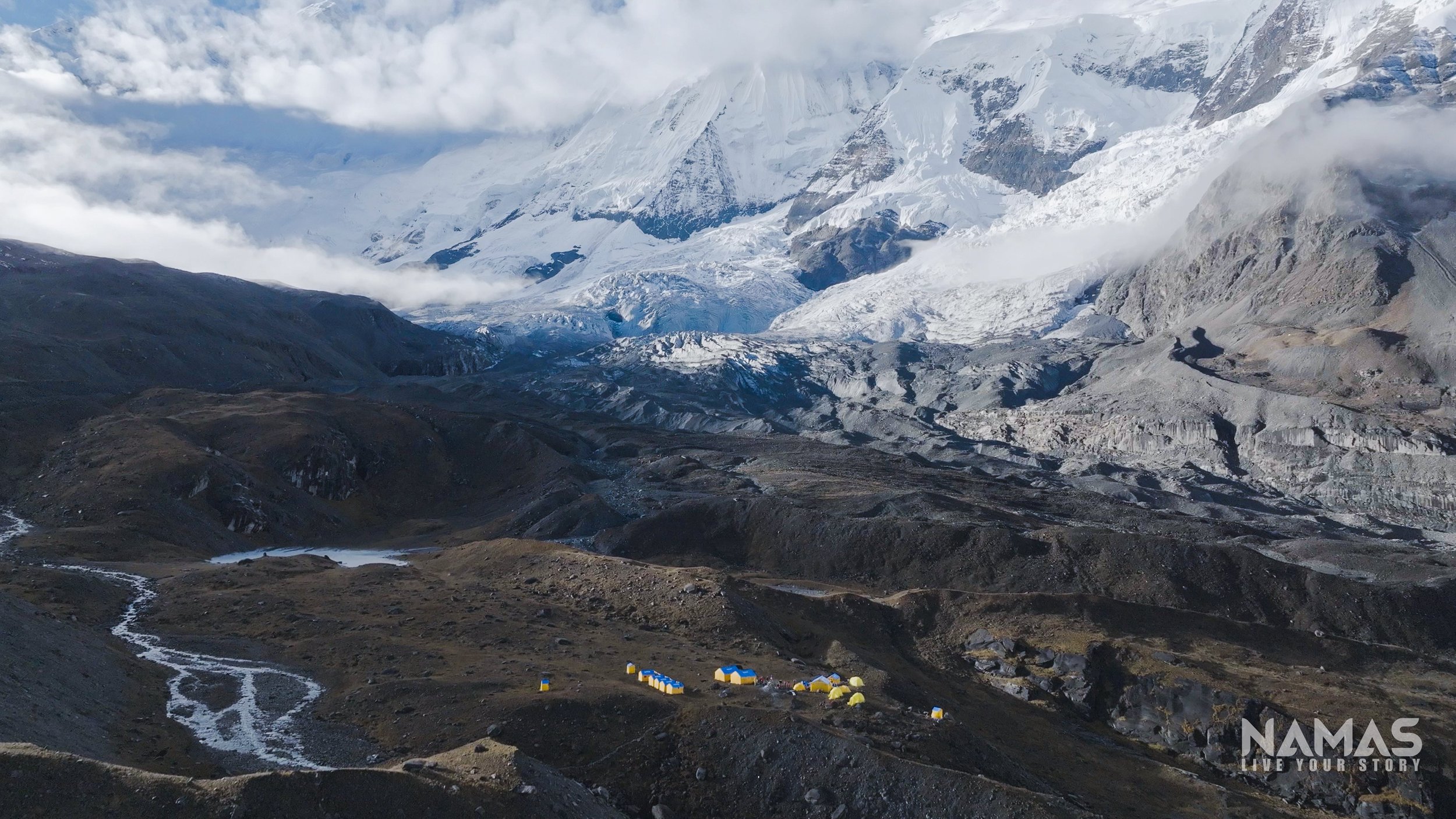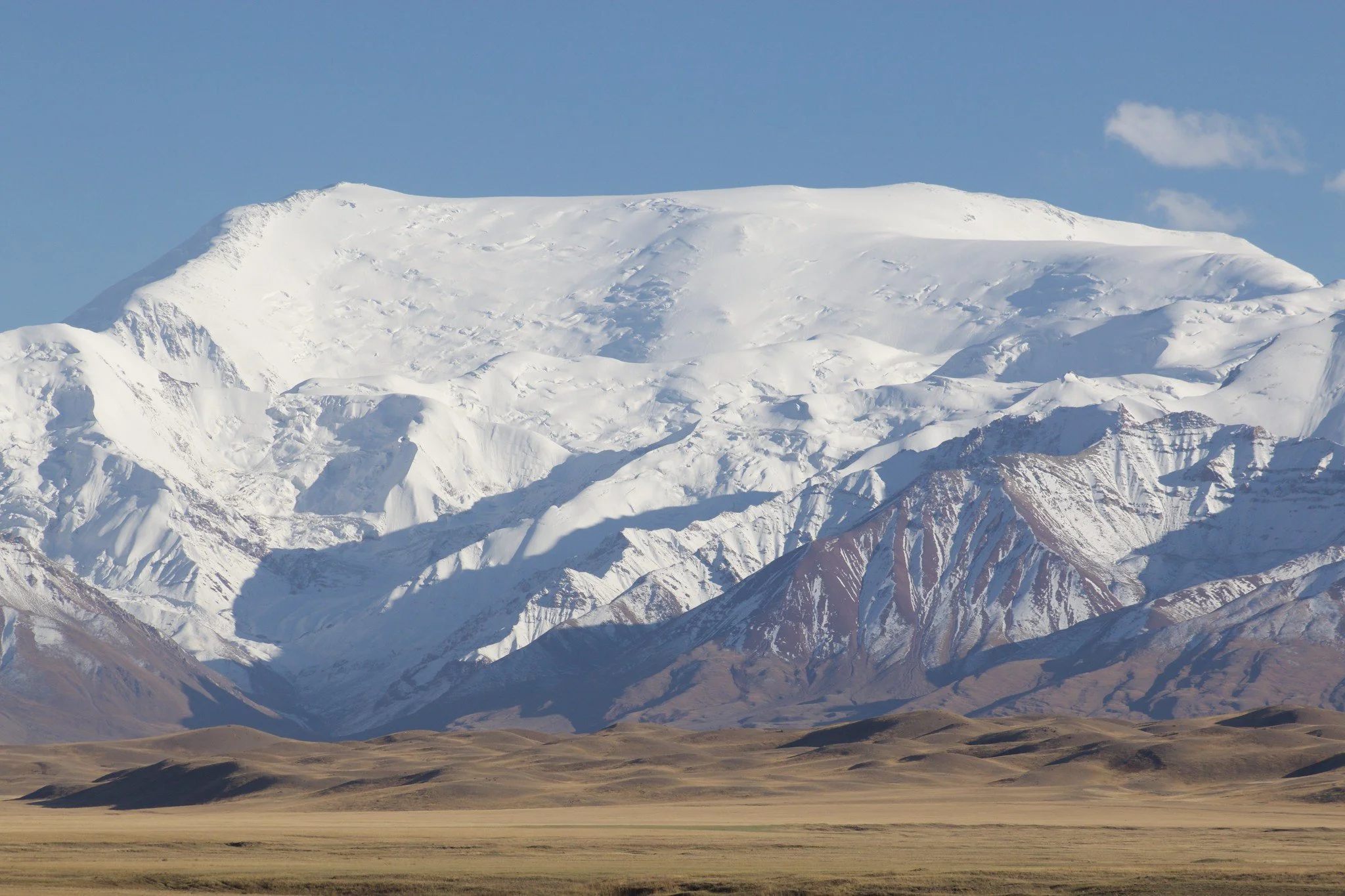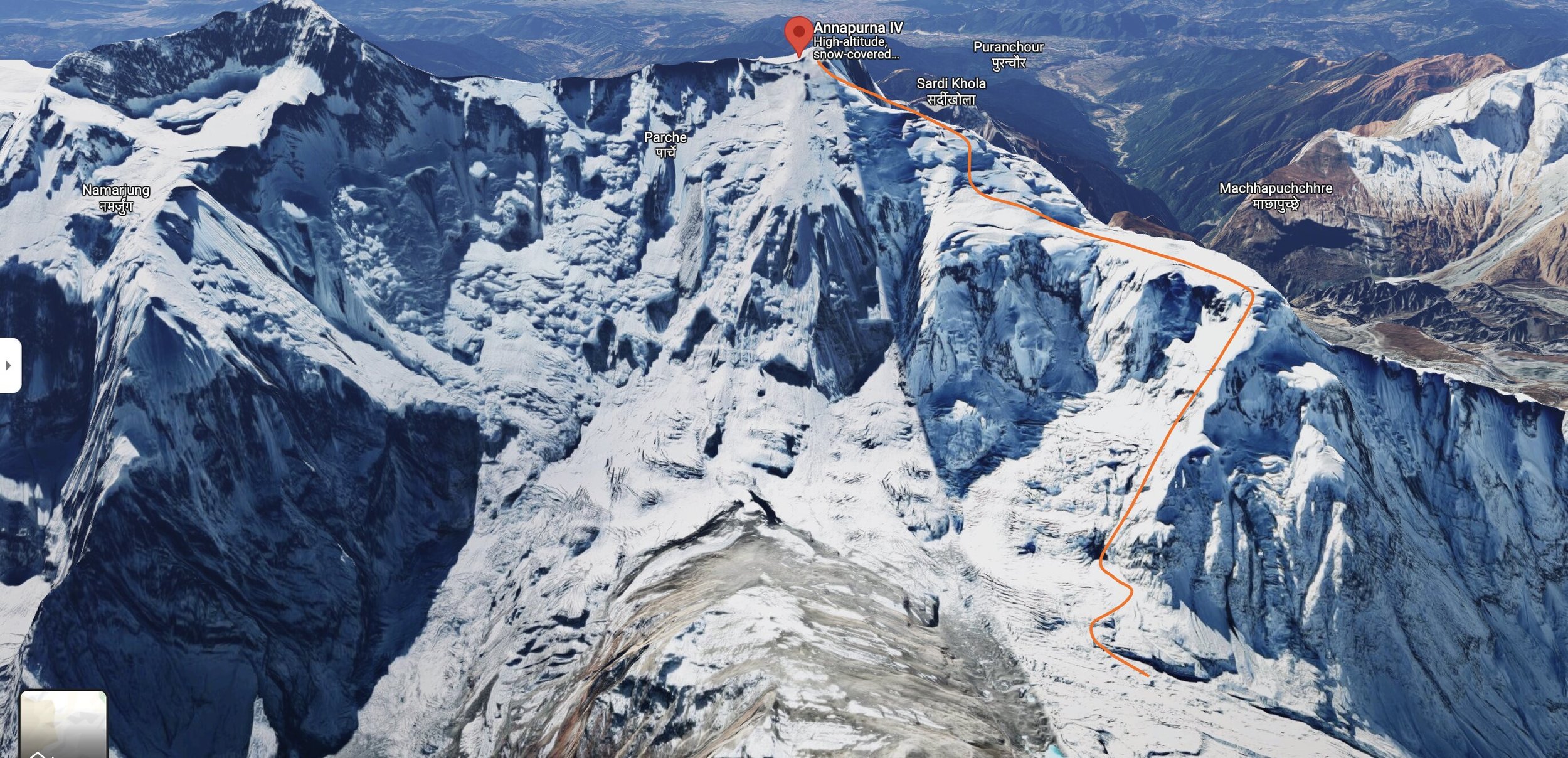Comparing 7000M Peaks: Which One is Right for Your Next Expedition?
Annapurna IV 7525M summit seen in the middle with Annapurna 2 on the left.
Perhaps you have completed several 4,000m to 6,000m summit expeditions and are now seeking a greater challenge. You might be exploring 7,000m mountains to enhance your high-altitude mountaineering experience, with aspirations of climbing Everest or one of the other 8,000m peaks. Alternatively, you may simply wish to immerse yourself in the pure exploration and remoteness that these high-altitude adventures offer.
Unsure on which 7000M peak to choose? In this blog post, we compare five prominent 7,000m mountain expeditions—Annapurna IV 7525M, Baruntse 7129M, Tilicho Peak 7134M, Himlung Himal 7126M, and Lenin Peak 7134M—to help you make an informed decision for your high-altitude journey.
1. Annapurna IV (7,525m)
Location: Annapurna Range, Nepal
Level: Advanced level
Technical Difficulty: High
Best Time to Climb: Spring (April-May) and Autumn (September-October)
Duration: 30 days
Key Features: Annapurna IV is a remote and lesser-climbed peak in the Annapurna range, known for its technical challenges. Climbers must have advanced skills in rock and ice climbing, as the route includes steep sections, exposed ridges, and deep snow. The peak's isolation offers a more immersive and adventurous experience, but it also demands excellent logistical planning. With only about 150 people ever reaching the summit, Annapurna IV is ideal for seasoned mountaineers seeking a quieter climb.
P.s. - Annapurna IV can be your expedition to prepare for Everest, Annapurna 1 or K2 expeditions.
Pros: Quieter, remote, and ideal as preparation for Everest or technical 8000m peaks.
Cons: Avalanche risk, technical sections, and steep terrain make it unsuitable for beginners.
2. Baruntse (7,129m)
Location: Barun Region, Nepal
Level: Intermedaite level
Technical Difficulty: Moderate to High
Best Time to Climb: Autumn (October-November)
Duration: 24 days
Key Features: Baruntse sits between the Everest and Makalu ranges, offering breathtaking views of both. It is popular among climbers preparing for lower 8000m peaks like Manaslu 8163M or Cho Oyu 8201M. The ascent becomes more technical after 6900m, particularly along the exposed summit ridge, which requires climbers to stay focused under challenging conditions. It’s a solid test for intermediate climbers who are ready for more demanding expeditions.
Pros: A great option for climbers seeking a moderate technical challenge before moving to 8000m peaks.
Cons: Exposed summit ridge demands advanced skills and leaves little room for error.
3. Tilicho Peak (7,134m)
Location: Annapurna Range, Nepal
Level: Intermedaite level
Technical Difficulty: High
Best Time to Climb: Spring (April-May) and Autumn (October-November)
Duration: 25-30 days
Key Features: Tilicho Peak offers a dramatic climb above Tilicho Lake, the highest lake in the world at 4900m. Though less famous than other Annapurna peaks, Tilicho is a technically demanding climb with steep rock scrambling, snow, and ice conditions at higher altitudes. This peak is for experienced climbers who have strong mountaineering skills and the endurance to navigate long, steep sections. Due to its remoteness, logistical planning is crucial, and only experienced teams should attempt this climb.
Pros: Stunning, remote, and less crowded with incredible views.
Cons: Requires advanced technical skills and careful planning due to the isolation.
4. Himlung Himal (7,126m)
Location: Manaslu Region, Nepal
Level: Entry level
Technical Difficulty: Moderate
Best Time to Climb: Autumn (September-October)
Duration: 25-30 days
Key Features: Himlung Himal offers a more moderate challenge, making it an excellent choice for climbers looking for an introduction to 7000m expeditions. The route to the summit is non-technical, consisting mainly of steady snow slopes and moderate crevasses. It’s a great option for those with limited experience who want to test themselves at high altitudes without the intense technical demands of other peaks.
Pros: Suitable for less experienced climbers with a straightforward route.
Cons: May not appeal to those seeking a more rugged, technical challenge.
5. Lenin Peak (7,134m)
Location: Pamirs, Kyrgyzstan/Tajikistan
Level: Entry level
Technical Difficulty: Moderate
Best Time to Climb: Summer (July-August)
Duration: 21-24 days
Key Features: Lenin Peak is one of the most accessible 7000m peaks, attracting many first-time high-altitude climbers. Its long, glaciated slopes offer a relatively straightforward ascent with minimal technical sections, but the altitude is still a serious challenge. Climbers must be well-acclimatized to avoid altitude sickness, and the unpredictable weather—particularly strong winds—adds another layer of difficulty.
Pros: Ideal for beginners seeking a high-altitude challenge without intense technical demands.
Cons: Crowded during peak season, with risks associated with altitude and harsh weather.
Comparison Summary
Which Peak is Right for You?
For Advanced Climbers: If you're looking for a highly technical challenge, Annapurna IV and Tilicho Peak are your best options. These peaks offer steep routes with plenty of rock and ice climbing, perfect for climbers with significant experience and no interest in crowded routes.
For Intermediate Climbers: Baruntse provides a good balance between moderate and challenging sections, making it a solid choice for those with some technical skills who are preparing for lower 8000m peaks.
For Beginners: Himlung Himal and Lenin Peak are great for climbers who are new to 7000m expeditions and want to experience the challenge of high-altitude mountaineering without the intense technical difficulties of other peaks.
Choosing the right peak depends on your experience, skill level, and what you want to achieve. Whether you’re aiming for a quiet, immersive climb on Annapurna IV or looking for an accessible, non-technical adventure on Lenin Peak, there’s a 7000m peak out there for you.
For more details on these expeditions and to plan your next adventure, visit our 7000M expedition page.
NAMAS Adventure
The Best Spring Climbing Expeditions in Nepal: 7000M, 7500M and 8000M - Namas Adventure
Spring is an excellent time for climbing in Nepal, as the weather is generally clear and stable, and the days are longer. There are several popular peaks to tackle during this season, including some of the highest and most challenging mountains in the world. If you're planning a spring climbing expedition in Nepal, here are a few options to consider and you could join us every spring
Mount Everest 8848M and Lhotse 8516M
This is the crown jewel of Nepal's climbing scene, and it's no surprise that many people flock to the country specifically to tackle this iconic peak. Spring is the best and the busiest season on Everest, as the weather is typically the most favorable. However, keep in mind that it's also the most crowded and competitive time to climb, as there are many other teams vying for the same summit window.
Lhotse is located just next to Everest and shares the same base camp and higher camps up to camp 3, so it's a convenient option for climbers who are already in the area. Many teams and our team offer Lhotse as an add-on or as a solo expedition. Lhotse is the fourth-highest peak in the world, and it offers a challenging and rewarding climb for those who are up to the task.
Level: Advanced to Pro. Time required: 30 to 60 days
Mt. Makalu is the fifth-highest mountain in the world. Standing at 8463 meters tall, this peak is located in the northeast region of the country and sits on the border of Nepal and China. As one of the eight-thousanders, Makalu offers a more technically challenging climb than Mt. Everest and is known for its lack of crowds. The spring season is the best time to tackle Makalu, as the weather and snow conditions are generally favorable. With its distinctive pyramid shape and beautiful views, Makalu is a must-climb for those looking to avoid the crowds of the more popular Everest expedition or for those seeking a new challenge after climbing the world's highest peak.
Level: Advanced to Pro. Time required: 30 - 45 Days
Located in the Khumbu region of Nepal, Ama Dablam is a beautiful and technically challenging peak that is often referred to as the "Matterhorn of the Himalayas." It's a popular choice for experienced climbers who are looking for a less crowded alternative to Everest, and the spring season offers the best weather for a successful ascent.
Level: Advanced to Pro. Time required: 21 - 30 Days
Annapurna I 8091M
Spring is one of the best times to take on the Annapurna massif range. Annapurna I is the tenth-highest mountain in the world, standing at 8019 meters tall. Located in north central Nepal, it is part of the Annapurna mountain range and is considered one of the most dangerous peaks to climb due to its steep and unpredictable terrain. Despite the risks, many climbers are drawn to Annapurna I each year due to its beautiful views and challenging routes
Level: Advanced to Pro. Time required: 30 - 45 days
Annapurna IV (7525 meter) is a lesser-known peak in the Annapurna mountain range of Nepal, standing at 7525 meters tall. It is located between Annapurna II and III. Despite its relatively low elevation compared to other peaks in the range, Annapurna IV is a challenging climb due to its steep and rocky terrain but less technical and dangerous compared with the other Annapurna peaks.
Level: Intermediate + to Advanced. Time required: 25 - 33 Days
Himlung Himal 7126M
This is another exciting 7000M mountain peak to climb during the spring season. Comprised of bit snowy conditions when compared to the autumn season, Himlung Himal is an exciting peak to climb where there are fewer teams taking on the challenge of climbing during the spring. With the right amount of team members (4+) this 7000er is one of the safest and easiest objectives to take on.
Level: Intermedaite to +. Time required: 25 - 30 days
No matter which peak you choose, it's important to remember that climbing extreme and technical high-altitude peaks in the Himalayas is a serious undertaking that requires a high level of fitness, technical skill, and mental fortitude. Make sure you have the necessary experiences, mindset, and commitment to physical training before venturing into these daring endeavors. Namas expedition team can help you navigate the complexities of planning your expedition. With the right preparation and mindset, a spring climbing goals expedition in Nepal can be an unforgettable and life-changing experience.
Let’s go take on your spring climbing goals.
Namas Adventure Team
Live Your Story














